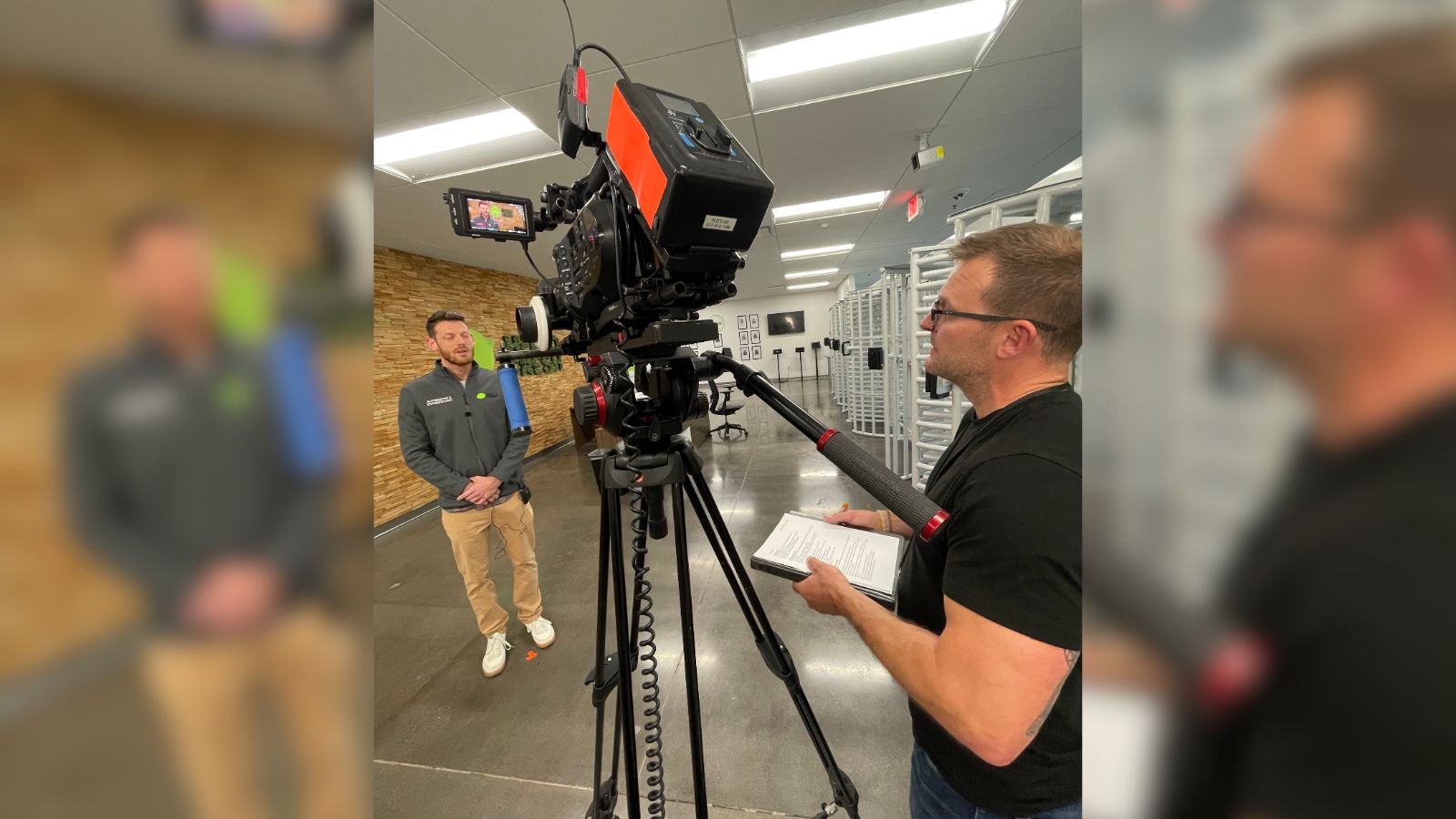How B2B Companies Can Leverage Video Content for Sales Enablement
In today’s fast-paced business environment, sales enablement has become a critical strategy for companies looking to equip their sales teams with the tools and resources they need to close deals effectively. Video content has emerged as one of the most powerful means of engaging B2B buyers throughout the sales process. In fact, 87% of marketers say video gives them a positive ROI, making it a must-have tool in any B2B sales enablement strategy.
In this blog, we’ll explore how B2B companies can leverage video content to empower their sales teams, streamline the buyer journey, and close deals faster.
What is Sales Enablement in B2B?
Before diving into how video content fits into the sales enablement framework, it’s essential to understand what sales enablement means for B2B companies.
Sales enablement refers to the process of providing your sales team with the resources, information, and tools they need to sell more effectively. This includes everything from product knowledge and competitive insights to sales scripts and marketing content.
In a B2B setting, sales enablement helps bridge the gap between marketing and sales teams, ensuring that both are aligned in messaging and strategy. One of the most effective tools in this alignment is video content, which has proven to be a powerful medium for educating, engaging, and converting leads into customers.
Why Video Content Works for B2B Sales Enablement
The B2B sales cycle is typically longer and more complex than B2C sales. Buyers conduct extensive research, engage with multiple stakeholders, and weigh numerous options before making a decision. Here’s why video content is perfectly suited to enhance the B2B sales process:
- Engaging and Memorable
Video content is far more engaging than text-based content, making it easier for B2B buyers to digest complex information. Studies show that viewers retain 95% of a message when they watch it in a video compared to 10% when reading it in text. In a crowded marketplace, standing out is essential, and video allows you to capture attention quickly. - Simplifies Complex Concepts
B2B products and services are often intricate, requiring detailed explanations. Video can break down these complexities into easy-to-understand visuals, such as animations, product demos, or explainer videos, helping potential buyers quickly grasp the value of your offerings. - Fits Every Stage of the Sales Funnel
From awareness to decision-making, video content can be tailored to fit every stage of the B2B sales funnel. Whether it’s an educational video at the top of the funnel or a case study aimed at decision-makers, video content is adaptable to different buyer personas and stages in the journey. - Enhances Personalization
Personalized marketing is becoming the norm, and video is an ideal medium for delivering customized messages. Sales teams can use personalized video content to address specific buyer pain points, industry challenges, or even mention the prospect’s name and company. This creates a deeper connection and helps build trust faster.
Types of Video Content for B2B Sales Enablement
Here are the different types of video content B2B companies can use to improve sales enablement, categorized by the buyer journey.
1. Explainer Videos for Product Education
Explainer videos are short, concise videos that focus on explaining your product or service. For B2B companies, these videos can simplify technical concepts, making it easier for your prospects to understand how your solution solves their problem.
- Top of the Funnel (Awareness Stage): Use explainer videos to introduce your product to potential leads. This is especially useful for B2B buyers in the research phase, who need to quickly understand what you offer and how it addresses their pain points.
- Middle of the Funnel (Consideration Stage): More in-depth explainer videos can dive into specific features, showcasing what sets your product apart from the competition.
2. Testimonial Videos to Build Trust
Social proof is essential for B2B buyers who often face higher risks when making purchasing decisions. Testimonial videos feature satisfied customers sharing their experiences with your product, which can significantly influence decision-makers.
- Bottom of the Funnel (Decision Stage): Place testimonial videos in front of leads who are close to making a purchase decision. Hearing from other businesses similar to theirs can provide the reassurance needed to move forward.
- Post-Sale (Onboarding & Retention): Use testimonial videos to foster long-term relationships, showcasing how your product continues to deliver value over time.
3. Product Demos to Overcome Objections
Product demo videos are particularly useful for showcasing the functionality and benefits of your product in real time. These videos help potential buyers see your product in action and visualize how it can solve their challenges.
- Middle of the Funnel (Consideration Stage): During this stage, prospects are comparing solutions. A detailed product demo video can highlight how your product solves their unique business problems, helping overcome objections and position your solution as the best fit.
- Bottom of the Funnel (Decision Stage): Share detailed product walkthroughs with decision-makers to give them a final push toward choosing your solution. Tailor the demo to address common concerns or challenges specific to their industry.
4. Case Study Videos to Showcase Results
Case studies provide real-world examples of how your product or service has delivered tangible results. A video case study can offer a dynamic, narrative-driven approach to showcase how your solution helped previous clients overcome challenges.
- Bottom of the Funnel (Decision Stage): Use case study videos to demonstrate measurable success, such as increased ROI, improved efficiency, or other key metrics. This can be the final piece of content that convinces a prospect to convert.
5. Personalized Video for Direct Sales Outreach
Personalized video content can take your sales outreach to the next level. Imagine sending a potential buyer a custom-made video where your sales rep addresses them directly, discusses their business needs, and outlines how your product can provide the solution.
- Middle to Bottom of the Funnel: Personalized videos are an excellent way to re-engage leads who have gone cold or are stuck in the decision-making phase. These videos show that your team is willing to go the extra mile to offer a tailored solution.
6. Training and Onboarding Videos for Post-Sale Support
B2B companies should not overlook the importance of post-sale support in their sales enablement strategy. After closing a deal, training and onboarding videos can help clients get the most out of your product, ensuring customer success and long-term satisfaction.
- Post-Sale (Customer Retention): Provide value through video tutorials, training sessions, and how-to guides to ensure customers are well-versed in using your product. This can reduce churn and turn customers into long-term partners.
How to Implement Video in Your B2B Sales Enablement Strategy
Now that you understand the types of video content that can be used in B2B sales enablement, let’s dive into some best practices for implementation.
1. Align Sales and Marketing Teams
For video content to be truly effective in sales enablement, your marketing and sales teams need to be aligned. Marketing teams should create video content based on sales feedback and common customer pain points, while sales teams should know how to use these videos to engage with prospects.
2. Personalize Content for Different Buyer Personas
Not all prospects are the same, and neither should your video content be. Segment your audience by buyer personas and tailor your video content to speak directly to their unique pain points, goals, and objections. For example, a video targeting a CFO should focus on ROI and cost-efficiency, while one aimed at an IT Director should emphasize technical benefits and integration.
3. Utilize Analytics to Track Performance
One of the most powerful aspects of using video for sales enablement is the ability to track performance. Tools like Wistia, Vidyard, or even YouTube Analytics allow you to see how your video content is performing. You can measure metrics such as watch time, engagement, and even how far into the video viewers are watching. Sales teams can use this data to understand which parts of the video resonate most with prospects and optimize future content accordingly.
4. Integrate Video with Your CRM
Another key tip is to integrate video content with your CRM system. By doing so, you can track how individual leads interact with your videos, helping your sales team follow up at the right time. For example, if a prospect watches a case study video and then views a product demo, the sales team can prioritize follow-up knowing the prospect is highly engaged.
Conclusion: Video Content as the Ultimate Sales Enablement Tool
Video content is no longer a “nice-to-have” for B2B companies; it’s a must-have tool for sales enablement. From explainer videos that educate prospects to personalized video outreach that builds deeper connections, video offers an unparalleled opportunity to engage, inform, and persuade B2B buyers at every stage of the sales cycle.
By incorporating a variety of video content types and aligning your marketing and sales efforts, you can empower your sales team with the resources they need to close deals faster and more effectively. Start investing in video content today to take your B2B sales enablement strategy to the next level.






